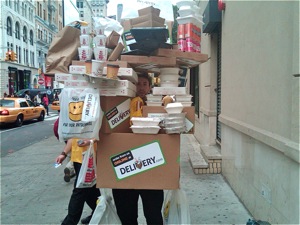Probably nobody in the world talks to more CMO’s than Pete Krainik, founder of The CMO Club. I caught up with Pete last week after The CMO Club Summit in New York City and asked him for the inside scoop on CMO’s and social media. Here’s our Q&A:
DN: There was a lot of conversation at The CMO Club Summit about social media. Why do you think this is the case?
CMOs care about customer engagement and having a reason and vehicle for listening, having a conversation, and sharing their Brands. Social media is simply the best way, for many brands to do this. Every Brand has different products/services and customers so the conversation’s centered on new and game changing ideas they can build on for their industry, customer base and products.
The other big reason is about marketing mix optimization. Every dollar and resource focused correctly is worth significantly more than before. More targets, more marketing vehicles results in more interest in getting it right.
DN: Do you expect this conversation to grow over the next 12 months or are CMOs approaching Social Media fatigue?
The conversation will grow but move from social media to social marketing and social branding. I’ve noticed within The CMO CLUB that more and more 1-1 conversations with CMOs to think through synergies for sharing resources together. Moving from company specific apps, communities, programs to a community of Brands approach. Very interesting times ahead.
DN: The CMO’s at the event seemed to be at various stages of the adoption curve when it comes to social media, why do you think that is the case?
A number of reasons. For larger, more technical B2B Brands, a smaller number of customers are leveraging social media so the call to action and priority is different than for B2C Retailers and CPG companies. Also some companies focus on innovation leadership while others are fast followers, etc. Finally global companies have issues of rollout and priority by region, product lines, etc.
DN: What role does social media play in the marketing of the CMO club?
Given the club is an exclusive “heads of marketing only” community with the mission of facilitating the world’s best CMO conversations, Social media has been the single more important vehicle for the growth of membership. Two out of every 3 new members in the club come from referrals and recommendations from heads of marketing in the club.
We not only use social media for communicating new posts and events from members, but the members only site itself is a community site vs. website. Everything from member blog posts, member Q/A, New CMO jobs on the market, vendor rating programs, plus content in the CMO CLUB Thought Leadership Library is contributed from members. Social media is used to share member insights, build subgroups of interests, and listen to members.
Our weekly poll question of members has gone from 75 to 150 members per week responding, then sharing and discussing results. The value of the club is to help CMOs connect with peers, share insights, and stay sharp and competitive as heads of marketing. Social media and our social community platform is the catalyst to make it happen.
DN: Pete closed by noting that the October 2011 CMO Club Summit in Los Angeles will have a large section focused on “CMO worthy” innovations in social media.
